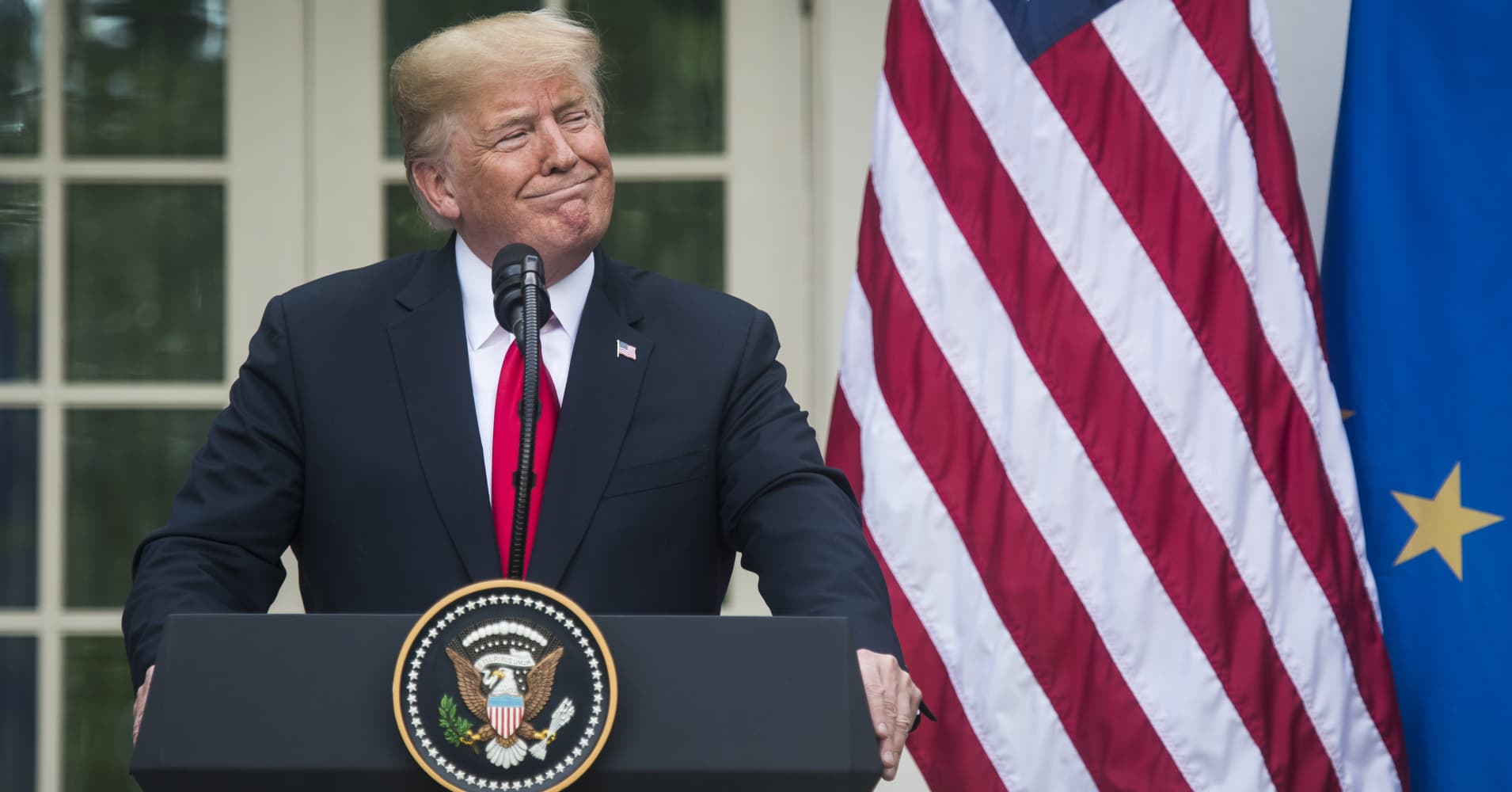
President Donald Trump pitched his economic record to voters Friday morning — saying strong numbers released earlier in the day were “sustainable” and blasting Democrats for wanting to “raise everybody’s taxes.”
Trump said “we’re going to go a lot higher” than 4.1 percent gross domestic product growth during a speech on the White House South Lawn, speaking shortly after the Bureau of Economic Analysis released its estimates for the second quarter. And he predicted that the country was on track for its highest annual growth rate in over 13 years.
“As the trade deals come in one by one, we’re going to go a lot higher than these numbers, and these are great numbers,” the president said.
Trump pumped up expectations for U.S. economic growth for the remainder of the year — a potential political risk for Republicans in this year’s midterm elections and Trump himself in his 2020 re-election bid. He called the numbers “very, very sustainable” and predicted that the U.S. would “do extraordinarily well” in its third-quarter GDP report.
The president acknowledged the potential peril if the economy does not match his rosy outlook. “I won’t go too strong” in my projections, “because then if it’s not quite as good, you won’t let me forget it,” the president said.
Republicans hope a strong economy will help to prop them up as they try to stop an energized Democratic Party from taking a House majority in November’s midterm elections. That strategy underscores why the president gave his previously unscheduled remarks on the economy following the GDP report.
The president cited the low unemployment rate among black Americans, and repeated his claim that “we’ve been ripped off by the world,” a point that the president has used to make his case for renegotiating trade deals with foreign leaders.
On Wednesday, the president announced that he had secured concessions from the European Union after a meeting with European Commission President Jean-Claude Juncker.
“The trade deficit, very dear to my heart because we’ve been ripped off by the world, has dropped off by more than $50 billion dollars,” the president said Friday.
The president compared his economic numbers to those of George W. Bush and Barack Obama.
“During each of two previous administrations, we averaged just over 1.8 percent GDP growth. By contrast, we are now on track to hit an average GDP annual growth of over 3 percent, and it could be substantially over 3 percent,” the president said. “Each point, by the way, means approximately $3 trillion and 10 million jobs.”
Earlier Friday the government announced that the economy grew in the second quarter at the fastest pace in nearly four years. Trump proclaimed in a post on Twitter that the GDP figure was “GREAT.”
The number was buoyed by increased consumer spending and business investment. Economists warned the number may have been artificially boosted by a flood of exports in the second quarter as countries race to get American goods, such as soybeans, that could be harder to come by if further tariffs go into effect.
Trump had previewed the economic data on Thursday, during a speech in Illinois. Trump said of the indicator, “If it has a 4 in front of it, we’re happy.”
Trump’s top economic advisor, Larry Kudlow, also played up the GDP number before its release. On Thursday, Kudlow told Fox Business that “you’re going to get a very good economic growth number tomorrow, big.” He said later in the interview that he didn’t know what the number would be.
The president has been keen to use the booming economy as one of his key pitches to voters ahead of this fall’s midtrem congressional elections. Democrats are slightly favored to regain control of the House, while Republicans are expected to maintain a thin majority in the Senate. The campaign is widely seen as a referendum on Trump’s early days in office.
The Bureau of Economic Analysis noted that personal income growth, in the form of wages and salaries, decelerated in the quarter despite the GDP increase.
Republicans predicted that their tax overhaul would boost wages, but so far employee pay has yet to rise meaningfully. Meanwhile, corporations have boosted their stock buybacks and cash distributions to shareholders, which have accelerated at a record pace. Bloomberg reported earlier this year that 2018 was on track to be the first year in which shareholders saw a $1 trillion windfall from stock buybacks.
Be the first to comment